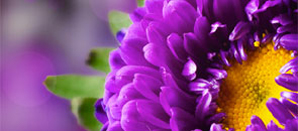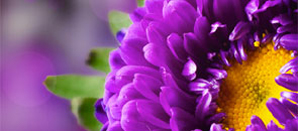 There’s still time to pot up your hanging baskets, tubs and plant out your summer bedding plants.
There’s still time to pot up your hanging baskets, tubs and plant out your summer bedding plants.
As it’s now turned out to be a late season, after all the cold and wet of April and into the first part of May, there’s still time to pot up hanging baskets and tubs and plant out summer bedding plants. With a few days warm weather they’ll soon start to grow.
Hanging Baskets
Planted baskets should be kept inside until the beginning of June, depending on the weather, remember it’s not unknown to get a late frost in early June so make sure you keep an eye on the weather forecast. Water regularly – every day when the sun starts shining – and feed weekly with a plant food such as Miracle Gro All Purpose Plant Food or Phostrogen. Don’t forget to dead head often and your plants will give colour right through to the autumn. Why not plant a basket up with one type of plant, for example trailing petunias for an instant effect or join in the jubilee celebrations and use red, white and blue as your theme?
Bedding Plants
The beginning of June should be about the right time for planting out the more tender bedding plants, such as salvias, dahlias and the ever popular geraniums. Watch out for slugs on newly planted bedding plants and herbaceous such as hostas, they’ll ruin your plants overnight if left unchecked, especially marigolds! If you’ve planted impatiens in your garden on a regular basis over the years, leave them alone this time, the downy mildew disease that they’re susceptible to now appears to be widespread and many garden centres will not be stocking them this year. Although we won’t have the seed raised bedding impatiens, we will be having the new seed raised New Guinea impatiens divine which appears to resist downy mildew.
Vegetable Plot
There’s still plenty to do out in the vegetable plot. Keep sowing or planting salad crops, carrots, beans and peas to get a succession of feeds. Little and often is the rule. Remember, don’t plant out tomato plants until it’s warmer at night – they soon go blue if there’re cold!
Keep up the spraying of roses to prevent blackspot and mildew and to control any aphid invasions. Dead head regularly to get a succession of flowerings.
Spray gooseberries against sawfly, as once you get the caterpillars on your plants they’ll strip it within a matter of days. Protect any fruit against bird damage by netting over the bushes. After looking after your plants for the rest of the year, it’s a shame if the birds get to the fruit before you do!
General Maintenance
Continue weeding borders on a warm sunny day, this not only lets some air into the ground, but less weeds means less competition for nutrients and water. Thin out any annual seeds that you’ve sown directly into the garden, to allow the better plants to grow.
Any tall growing herbaceous plants are better staked before they start to fall over. Trim off dead heads as flowers finish, this allows the plant to put all its energy into producing more flowers.
Trim back perennial alyssum and aubretia as soon as the flowers finish. Very often aubretia will produce another batch of flowers later in the summer and into the autumn. Early flowering shrubs such as weigela, deutzia and philadelphus can be pruned back after flowering ends – remove some of the older flowered stems to encourage the shrub to produce new fresh growth for next year’s flowers.
Continue mowing the lawn and trimming the edges. A neat lawn makes everything else in the garden look at its best. If the weather does go dry again, leave the grass slightly longer as it will withstand a drought better. Aerate your lawn if you haven’t already done so, this is easier to do if the ground is damp. Use a lawn dressing to aid moisture retention and drainage.
Apples will drop many small fruits this month – it’s known as the June drop. Don’t worry! It’s nature’s way of thinning out the crop.
You can do even more thinning if a particularly heavy crop is being carried.
Although we’re rapidly approaching the warmest months of the year, give a thought to planting some seed potatoes for a Christmas crop. These should be planted in July and can be harvested ready to cook for Christmas dinner!
This month’s tips are provided by Ann Winwood of Lealan Garden Centre, Shipley.






